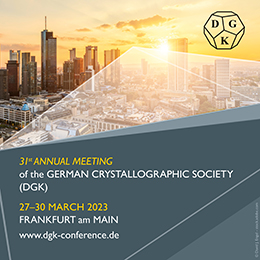


Commentary
Learning from approximate periodic symmetry in organic P1 structures
![thumbnail [thumbnail]](https://www.iucr.org/__data/assets/image/0019/155503/me6198thumbnail.jpg)
The article by Brock (2022) is the result of an ambitious 3+ year long project to study the occurrences of approximate symmetries in the space group P1. Brock selected the November 2019 version of the Cambridge Structural Database (CSD; Groom et al., 2016), where 2592 reports of organic crystal structures (based on Z, Z′ and an R value ≤ 0.05) were found. Using a number of criteria this set was distilled down to 1407 Z = Z′ > 1 and 1049 Z = Z′ = 1. In the former group, molecules (including cations and anions) within asymmetric units were evaluated for possible approximate symmetries: 2, 21, 3, 31, translations, inversions or glides. Entries in the latter group were retained if some possible approximate symmetry was detected within the molecule(s). A subset of crystal structures was removed from both sets if the symmetry indicated these would be better described in a higher-symmetry space group. Brock's conclusion is that approximate symmetry is pervasive in P1 crystal structures.
There are a number of notable findings that are worth considering. About five-sixths of the Z = Z′ > 1 group and three-quarters of the Z = Z′ = 1 display evidence of some approximate symmetry. Enantiopure materials mimic inversion symmetry about one-third of the time. Approximate rotational symmetry is found about two-fifths of the time. Perhaps more of a surprise, for achiral and racemic materials, approximate glide or mirror symmetry is found more often than approximate inversion symmetry. Wherever possible Brock points out if the approximate symmetry leads to a better description as a two-dimensional structure with a corresponding layer group designation. For these p2111 and c211 are the most common with p112 as a distant third.
In the Results section, the lead observation is that overlooked crystallographic symmetry is common for crystal structures composed of achiral or racemic materials, but is uncommon for enantiopure materials. About 8% of the achiral or racemic structures are better described in a different unit cell or higher-symmetry space group. This is precisely the same conclusion as found by Richard Marsh in the past generation (Marsh, 2009). The statistics presented on recent publications versus previous decades is not encouraging with the overall trend remaining about the same.
Many readers perhaps perused this article when it first appeared, but did not dive into the deposited materials Brock used to determine the results and conclusions. There is a wealth of information within these six files including additional commentary on all crystal structures considered, illustrations of selected structures by approximate symmetry, illustrations of the aforementioned selected structures, a spreadsheet of the P1 Z > 1 structures, a spreadsheet of the P1 Z = 1 structures and a spreadsheet showing cell transformations and calculations of layer offsets. There is an enormous amount of data presented in the files to be gleaned. For example, I found one memorable crystal structure of mine (CSD refcode QUPBIN; Ha & Young, 2009) in the listing, where I learned it had a layer group designation of pba2.
It will be interesting to see if this article will inspire better software tools to assist the experimental crystallographer with some additional information when there is approximate symmetry within the crystal structure. When I started my career some 30 years ago it seemed rare in my experience to have any crystal structure with more than one molecule in the asymmetric unit. That observation has changed considerably in recent years. Just this spring and summer I had a period where most of the crystal structures completed in my laboratory had two or more molecules per asymmetric unit, or Z′ > 1, with several being Z′ = 8. This phenomenon appears to be due in part to the complexity of the molecules our chemists and scientists are designing, as well as the relative ease our modern instrumentation has to collect diffraction data on small, weakly diffracting specimens with relatively large unit cells. In any event, Brock's article provides useful tools we crystallographers can use to describe crystal structures with pseudosymmetry.
References
Brock, C. P. (2022). Acta Cryst. B78, 576–588.
Groom, C. R., Bruno, I. J., Lightfoot, M. P. & Ward, S. C. (2016). Acta Cryst. B72, 171–179.
Ha, J.-M. & Young, V. (2009). Acta Cryst. C65, o388–o395.
Marsh, R. E. (2009). Acta Cryst. B65, 782–783.
This article was originally published in Acta Cryst. (2022). B78, 712–713.
Copyright © - All Rights Reserved - International Union of Crystallography









